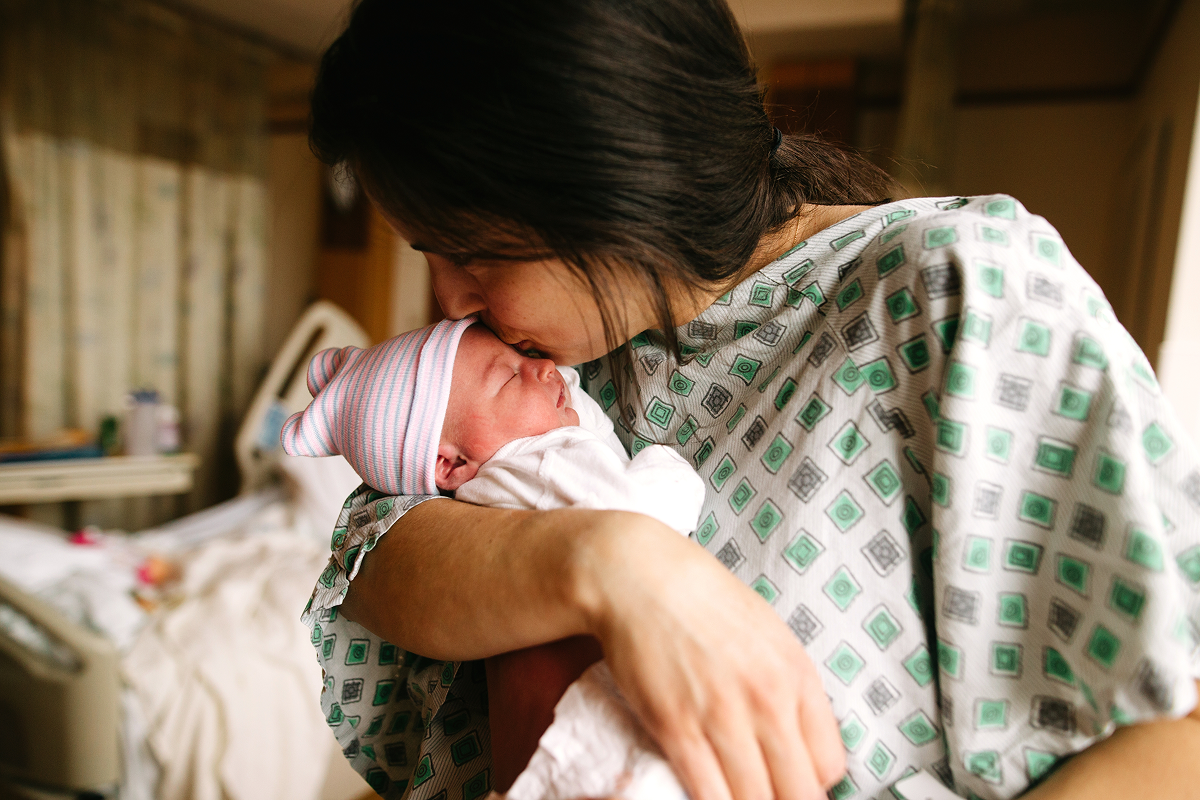Cesarean sections (C-sections) can be a lifesaving emergency procedure for some birthing parents, while others elect to have them before starting labor. One in three birthing parents has a C-section, and increasing numbers choose C-sections as their preferred method for all births.
Despite their prevalence, C-sections are still a major abdominal surgery and cause higher rates of complications and death among birthing parents compared to vaginal births. People who have C-sections also have a longer recovery time after birth and face increased medical costs. A report from the Health Care Cost Institute found C-sections cost $5,000 more than a vaginal birth, and those increased medical costs are often passed on to their employers and health plans.
Understanding vaginal birth after C-section
When birthing parents who had a C-section with their previous child are pregnant again, they have two options for the birth: getting another C-section or giving birth vaginally. Vaginal births after C-section (VBAC) are a safe, effective option for many pregnant people. An average of 75% of people who try labor after a C-section are able to successfully give birth vaginally, leading to a decreased risk of complications and death and lower birthing costs. Vaginal birth also has benefits for the baby, including a lower chance of respiratory conditions and improved immune system function.
However, despite the benefits, only 30 to 40% of pregnant people chose to labor after a C-section, leading to a national VBAC average of 13%. Many patients may not know that VBAC is an option for them, and providers may not counsel patients about their options for birth. Additionally, not all hospital facilities are equipped to support labor after a C-section, limiting this option for some patients.
With the U.S. facing a worsening maternal mortality crisis, leading perinatal care organizations are advocating for reducing unnecessary C-sections across the nation. Increasing VBAC rates is one lever organizations like the World Health Organization recommend due to its measurable impact on maternal health outcomes, with patient education as a key component driving the increase.
Maven’s research into how digital health supports vaginal birth after C-section
As the leading women’s and family health company, Maven is well-positioned to examine the effects that digital care and education can have on increasing VBAC rates in the U.S. Maven provides pregnant people with access to clinically-vetted educational content and online classes, Care Advocates to help members navigate their pregnancy journey, and on-demand virtual access to a range of healthcare providers, including midwives, doulas, OB-GYNs, mental health professionals, and more.
In Maven’s recent study, published in the Journal of Midwifery and Women’s Health, our clinical research team examined the impact that digital care coordination, healthcare provider appointments, and online content can have on VBAC rates.
Digital resources associated with higher rates of vaginal birth after C-section
Maven’s research found that members who engaged with Maven’s resources, including meeting with their Care Advocate, reading content, and having an appointment with healthcare providers, were more likely to have a VBAC. 16% of members reported having a VBAC, compared to the national average of 13%. The biggest contributor to the higher rates of VBAC was meeting with Care Advocates: members who had at least one appointment with their Care Advocate had seven times greater odds of having a VBAC compared to those who did not meet with Care Advocates.
Maven influences members’ birth type and birth plan
Upon completing the maternity track on Maven, members were surveyed about whether the platform influenced their birth type, birth plan, and approach to the maternity experience. Members who reported the platform influenced aspects of their pregnancy were more likely to have a VBAC compared to those who didn’t feel the platform influenced their birth experience.
How Maven cares for birthing parents
Our findings show that digital health platforms like Maven can help reduce key barriers that prevent VBAC. Maven’s Care Advocates can help educate members and help them find birthing facilities that can support labor after C-sections. Additionally, access to expert healthcare providers and clinically-vetted content can help with birth planning and increase the number of members who choose to pursue a VBAC.
To learn more about how Maven provides better care for parents-to-be and parents as they navigate their family journey, contact us today.
Ready to get started with Maven?
See how Maven can support working families, retain talent, and reduce costs

Activate your Maven account today
Maven members have unlimited access to 24/7 care and 30+ types of providers. Check to see if you have access to Maven providers and resources today.
Explore Maven

%20(1).png)





.png)
.png)

